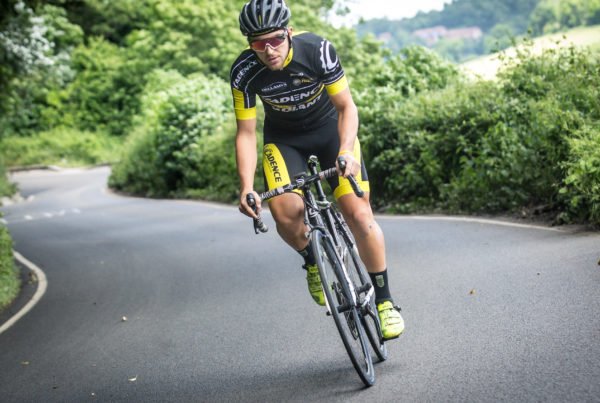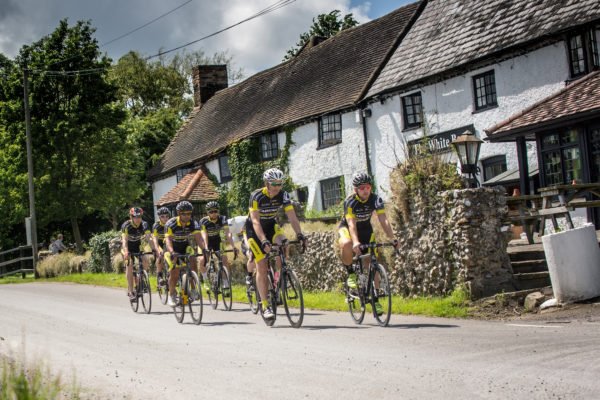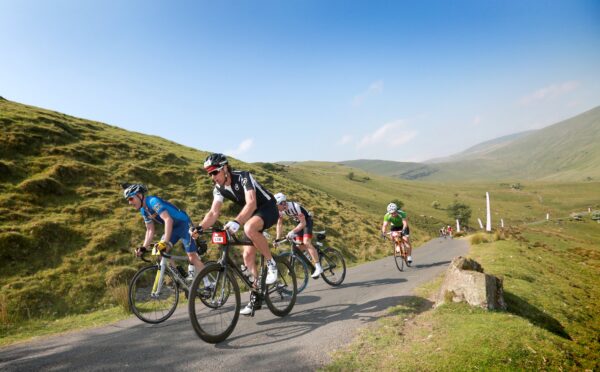
So you’ve entered yourself for a ride that you probably shouldn’t have. Whether you were being opportunistic (we all love a discount code…), acting on impulse, or just caving to peer pressure, we’ve all done it. But you’re not ready. Perhaps your training has been sidelined over the last few months, or maybe you needed a hiatus from the Cult of the Chamois. In any case, the distance/climbing/intensity is just slightly beyond your current ability.
What are you to do? Needless to say backing out isn’t an option. We pride ourselves on our ability to suffer, to push through. But the product of our suffering matters. We’d rather not suffer only to watch the group ride up the road, or to barely summit a climb. So better get training.
But there are no short-cuts here. There’s no secret “recipe” that will take you from well-fed zero to shiny-legged hero overnight. Rome wasn’t built in a day. However, what you can do is squeeeze as much benefit from the training time you do have as non-pharmaceutically* possible
*Don’t dope.
So here are some tips to get the most out of your crammed training efforts:
Recover better
First and foremost: If you want to get the most out of your training, you need to recover like a pro. There’s no point digging yourself a hole if you can barely get out of it. The faster you can get out of the hole the better. Then you can dig more holes. And more holes means better performance*.
*Admittedly the hole analogy falls down a bit here.
Proper recovery demands your attention, more so than training. Plenty of sleep, optimal food intake (that fuels training demands, first and foremost), and minimal psychological stress; these are the foundations of good recovery. You might also want to try and minimise physical activity outside of training (“NEAT”), which is likely to hamper recovery while providing very little fitness benefit. In addition, any recovery rituals you believe to be beneficial (massage, compression, ice baths, etc) could also help you here, but maybe not for the reasons you think…
See also: this article by Paula Robson-Ansley, Mike Gleeson and Les Ansley
Sleep
Arguably the most important part of your recovery schedule, sleep requires special mention. Here are some top tips courtesy of [@ShonaHalson](https://twitter.com/ShonaHalson) (see here and here) for improving your sleep:
- Establish a regular bedtime routine.
- Phones, tablets, and all other sources of blue light should be turned off in the hours before bedtime.
- Sleep with minimal noise and light (eye masks and ear plugs are a good idea).
- Minimise caffeine and alcohol intake in the evenings.
- Consume a high glycemic index meal 4 hours before bedtime.
- Consume less fluid if you’re regularly waking in the night needing to pee.

Train pragmatically
It’s important to have a plan, and to follow the plan, if only to assess whether the plan worked. But the best plans are adaptive. They allow you to train hard when you feel good, and take it easy when you’re fatigued.
So plan your training in terms of sessions, rather than days. For example, your training plan for the week might look like:
“2x interval sessions (when I feel strong), 1x long rides (when I can), 3x easy rides (ad hoc; for recovery/general volume).”
Rather than…
“Interval session Monday evening, easy ride Tuesday, long ride Wednesday, …”
If you want to take the introspective guess work out of this try tracking your heart-rate variability on a daily basis, preferably in the morning. I’d personally recommend the HRV for training app.
Make your hard sessions harder
Treat your high-impulse sessions (e.g. intervals, hill reps) as performance-critical. In other words, treat them like a race. Make sure you’re well-rested, well-fuelled, and well-motivated. Set targets, measure your performance, and hold yourself accountable. Would you take Pro Plus before a race? Take it before these sessions. The more you can get out of yourself the better. Maximise the adaptive stimulus.
Make your easy sessions easier
Many athletes have a warped understanding of what “easy” training is, or should be. When the plan calls for easy riding, you should do just that. It isn’t embarrassing, it isn’t slacking, it serves a purpose. That purpose may be recovery (physiological or psychological), or it may be to save resources for subsequent training. In any case, failure to adhere to easy training sessions fundamentally undermines a training plan. Know when to back off.
Don’t get stuck in the middle
This point follows from the previous two: your training should be hard or easy, with very little in-between. While this may sound obvious, many athletes default to training kinda hard. What do I mean by kinda hard training? Pushing it a bit on the way to work, chasing a “respectable” average speed on your local loop, taking a few uncomfortable turns on the front of the Saturday group ride. This training can be difficult, and indeed quite satisfying, but it isn’t effective. It is carries a significant recovery cost, without much of a fitness return. Worse still, if it is the mainstay of a program, it detracts from the quality of truly hard sessions.
When you’re out training, ask yourself where the current session difficulty falls [on a scale of 1– 10][Foster et al 2001_2]. If you’re regularly answering 6-7-8 you may need to rethink the plan, or more likely your execution of it.

Ramp up the heat
You’re probably familiar with the (potential) benefits of altitude acclimation, and might fancy the idea of an altitude training camp to expedite your last-minute fitness mission. But if an impromptu trip to 2000 meters isn’t feasible, you could reap similar benefits from heat acclimation. For most of us not blessed with warm weather, this means heating up a room, setting up the turbo trainer, and sweating it out for 1–1.5 hours. 60–70% of HRmax should do. Make this a regular feature of your training (daily or every other day) 1–2 weeks out from the event to make some quick and easy(ish) gains.
Bear in mind, this is a little contentious, and not everybody agrees with turning up the heat while training. In fact, Sports Test’s Garry Palmer has recorded a video previously for Yellow Jersey recommending against it.
Eat smart
A static diet plan just won’t cut it these days. As an athlete, when you eat is almost as important as what you eat. This is particularly true of carbohydrates: Your carbohydrate intake should be integrated into your training plan. Some suggestions/strategies to consider:
- Plenty of carbohydrates before key training sessions to maximise the quality of these sessions.
- Carbohydrate restriction before and/or during easy-to-moderate sessions (e.g. morning training).
- Carbohydrate restriction after key training sessions and overnight, thus sleeping in a carbohydrate-depleted state.
- High carbohydrate intakes during select sessions in order to train the gut.
- Practice race-day nutrition regularly.
Get your head strong
My last suggestion is less physiological.
If you’ve got a big event on the horizon that you know is going to be a challenge, and you know will test you, there is sense in testing yourself beforehand. Plan sessions that make you wince (or get a coach to do it for you). Get comfortable being uncomfortable.
Summary
There’s no fast track to fitness, but hopefully you can use some of the ideas presented above to raise your training game, and make as much of your training time as possible. Happy hurting!